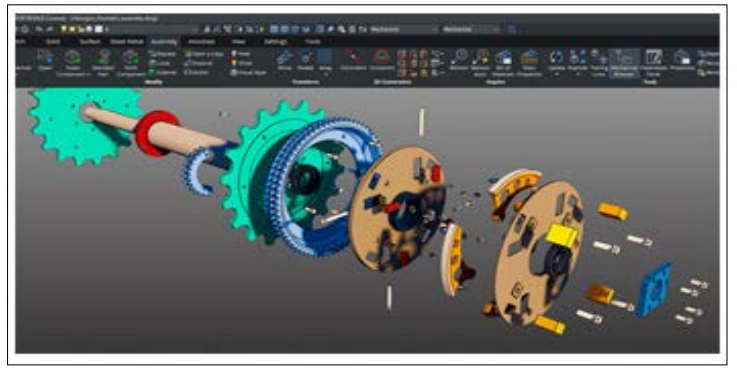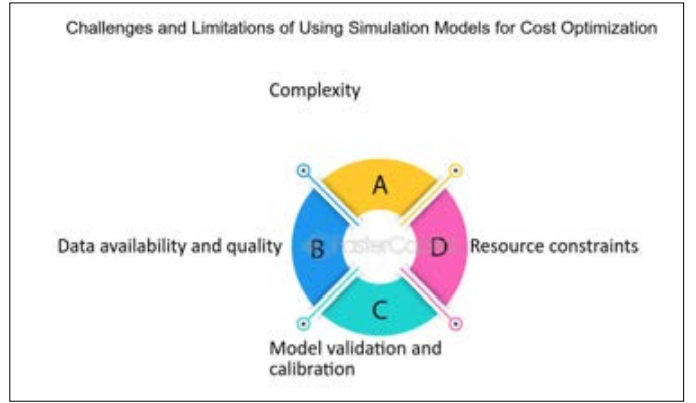Author(s): Sakthivel Rasu
ABSTRACT
Simulation tools have revolutionized the validation process in mechanical design by making it more accurate, quicker, and less expensive. These simulation tools allow engineers to test and analyze designs under various conditions, thereby reducing costly prototypes and speeding up the development process.
This paper examines the impact of simulation tools on mechanical design by exploring different types of tools, such as Finite Element Analysis (FEA), Computational Fluid Dynamics (CFD), and Multibody Dynamics (MBD).
It also discusses the highest advantages these tools offer in terms of increasing the accuracy of the designs, cost reductions, and improved product reliability. Challenges include using powerful computers and specialized knowledge; however, simulation tools have become indispensable to modern-day engineering.
In short, this paper has illuminated how the use of simulation tools has become fully integrated into the process of mechanical design validation, enabling the engineer to produce a reliable, qualitative design in the least amount of time.
Mechanical design validation checks whether the design meets its purpose, specifications, and safety before manufacturing. Traditionally, prototyping, testing, and redesigning undergo several iterations, which often prove time-consuming and costly. However, with the emergence of simulation tools, the scenario has completely changed. Now, an engineer can test and validate his design virtually and minimize the need for physical prototypes.
Simulation tools efficiently identify potential issues early in the design process, allowing engineers to make informed decisions and ensure the final product meets the required standards. This reassures the audience about the quality of their work.
This paper focuses on the impact simulation tools have had on the process of mechanical design validation, underlining how they have become indispensable parts of modern engineering.

Mechanical design validation has come a long way from its original paradigm. Conventionally, engineers could validate their designs using hand calculations, physical prototypes, and a test- and-error approach. All these processes involved a lot of time and expense, and there was a considerable possibility of error. As computation technology advanced, simulation tools emerged as the more efficient way to validate the designs.
The late 20th century saw a pivotal moment in the history of mechanical design validation with the advent of computer-aided design software. This revolutionary technology allowed for the creation of digital models and virtual analysis and testing, inspiring a new era of innovation in the field.
Nowadays, simulation software like ANSYS, SolidWorks, and COMSOL Multiphysics is indispensable in the validation process of mechanical design; it offers rich functionalities to simulate complex mechanical systems with high accuracy.

These simulation tools come in all shapes and sizes, and each one serves different aspects of mechanical design validation. The general ones are FEA, CFD, and MBD. Each of these tools plays a critical role in ensuring that the designs are properly validated.
FEA is a numerical technique used to analyze structures and components' behavior under different loading conditions. By defining a complex design as small, manageable elements, engineers can assemble solutions for each element's stresses, strains, and displacements that have occurred.
FEA, as one of the most widely utilized methods in mechanical design validation, plays a crucial role in optimizing material usage. It helps locate failure points, ensuring efficient use of materials, and confirms whether the design will meet the stipulated safety standards.
CFD stands for the numerical analysis of fluid flow and heat transfer processes, along with related phenomena, within a mechanical system. It is very much applied in areas involving fluid interaction, such as pump, turbine, and heat exchanger designs because fluid interactions are also important in validating such designs.
Simulation of fluid behavior helps engineers optimize their designs' performance and proactively identifies potential points of pressure drops or turbulence. This proactive approach empowers engineers to address issues before they become critical, enhancing the system's reliability and safety.
MBD simulations are invaluable in understanding the complex motion of interconnected mechanical parts. They are a crucial part of the design verification process, particularly when dealing with complex mechanisms like automotive suspension systems, robotic arms, and machinery.
Simulations in MBD help engineers understand how different components will interact with each other to ensure their design operates as it's supposed to.
Among the major impacts that simulation tools have on mechanical design validation, the most important is the improvement in design accuracy. Engineers can identify and address potential real-world design flaws well in advance before actual manufacturing has taken place. In such a case, FEA can indicate regions of a high-stress level within a structure that engineers may reinforce, thus avoiding potential failures.
These simulation tools drastically reduce the number of physical prototypes required, offering considerable cost savings.
In traditional design validation, multiple prototypes would be built and tested, each iteration adding to the overall cost and timeline. Simulation tools allow engineers to test and refine designs virtually, reducing the number of prototypes required.
|
Validation Method |
Average Cost per Iteration
|
Total Iterations |
Total Cost |
|
Traditional (Physical) |
$10,000 |
5 |
$50,000 |
|
Simulation- Based |
$2000 |
5 |
$10,000 |
As shown in Chart 1, simulation-based validation is significantly more cost-effective than traditional methods.
These simulation tools enable the engineer to test designs under various conditions for the best and most highly reliable final product. For example, simulation tools can be used to simulate extreme conditions, such as very high temperature, pressure, or load, that the design is likely to face; this helps the engineers establish weak points within the design and make necessary changes for performance improvement.
These are used, for example, in the aerospace industry to simulate various flight conditions that the different parts of an aircraft are normally subjected to. This provides a way to validate and test their structural integrity. In this regard, the components are assured of withstanding operation stresses for safety and reliability purposes.

Despite these many benefits, simulation tools come with their challenges. One of the main challenges is the need for high processing power, especially when dealing with complex simulations. Large models with intricate details can take hours or even days to simulate. However, these challenges can be effectively managed with powerful computers and advanced software.
Another challenge is the learning curve with simulation tools. Engineers must be specially trained in how to use such tools, which is very time-consuming and expensive. Moreover, the results from any simulation are only as good as the input data and assumptions that went into the analysis.
Therefore, it is necessary to validate the results of simulations with physical tests to ensure their accuracy.
The most promising and exciting trend in simulation is integrating Artificial Intelligence and Machine Learning. The power of Artificial Intelligence would allow Machine Learning algorithms to demonstrate the capability of optimizing simulation processes by reducing time consumption during complex computations that are usually needed and increasing the overall accuracy of results.
These technologies can analyze past simulation data to identify patterns, learn from previous designs, and suggest improvements or adjustments to current projects. So, design engineers will be enabled to get predictions and recommendations on how to optimize their designs, even without running detailed simulations, which can significantly speed up the process of design validation.
The ability to "learn" from previous simulations will make AI and ML increasingly crucial in creating more efficient and innovative mechanical designs.
Another future trend that seems to be changing the face of simulation tools is cloud computing. Traditionally, running simulations for complex mechanical designs required powerful and expensive hardware, which could be a major barrier for small and medium-sized enterprises (SMEs).
Cloud-based simulation changes the game because engineers can access powerful simulation software through the Internet. Cloud- based simulations can be done remotely on cloud servers without high-performance hardware.
This trend cuts costs and allows access to have several engineers working on the same project from dispersed locations collaborate. Hence, cloud-based simulation is mainly expected to make advanced simulation tools more available, especially to smaller companies with limited resources, thereby leveling the playing field in mechanical design validation.
Real-time simulation and Virtual Reality (VR) technologies are becoming increasingly crucial in mechanical design validation. Real-time simulations allow the engineer to see immediately how changes in a design affect performance, thus streamlining the decision-making process and helping to catch potential issues early on in a product's design phase.
VR takes this further by letting engineers view and interact with their design in a completely immersive virtual environment. This will allow the engineers and stakeholders to experience a design as if it were a real, physical object, making it much easier to understand how various components will work together.
It enhances collaboration by providing intuitive, hands-on design validation. It also allows for excellent communication between team members, reducing the chances of misconceptions and errors in the design process. As these technologies evolve, they will likely be standard tools for engineers working on complex mechanical design projects.
To better understand the capability of simulation tools, consider the following chart, which compares conventional methods of validation with simulation-based approaches across different industries [1-5].
|
Industry |
Traditional Validation (Weeks) |
Simulation- Based Validation (Weeks) |
Time Savings (%) |
|
Automotive |
16 |
6 |
62.5% |
|
Aerospace |
20 |
8 |
60% |
|
Consumer Goods |
12 |
4 |
66.7% |
Chart 2 shows that simulation-based validation offers significant time savings, making it an attractive option for industries with tight deadlines.
The application of simulation tools completely changed the character of mechanical design validation due to greater accuracy, cost efficiency, and product quality. Despite all the challenges, its advantages make it irreplaceable in contemporary engineering.
Further technological development will embed more advanced AI, cloud computing, and VR capabilities in the simulation tools, reaching a critical value in the design validation process.
